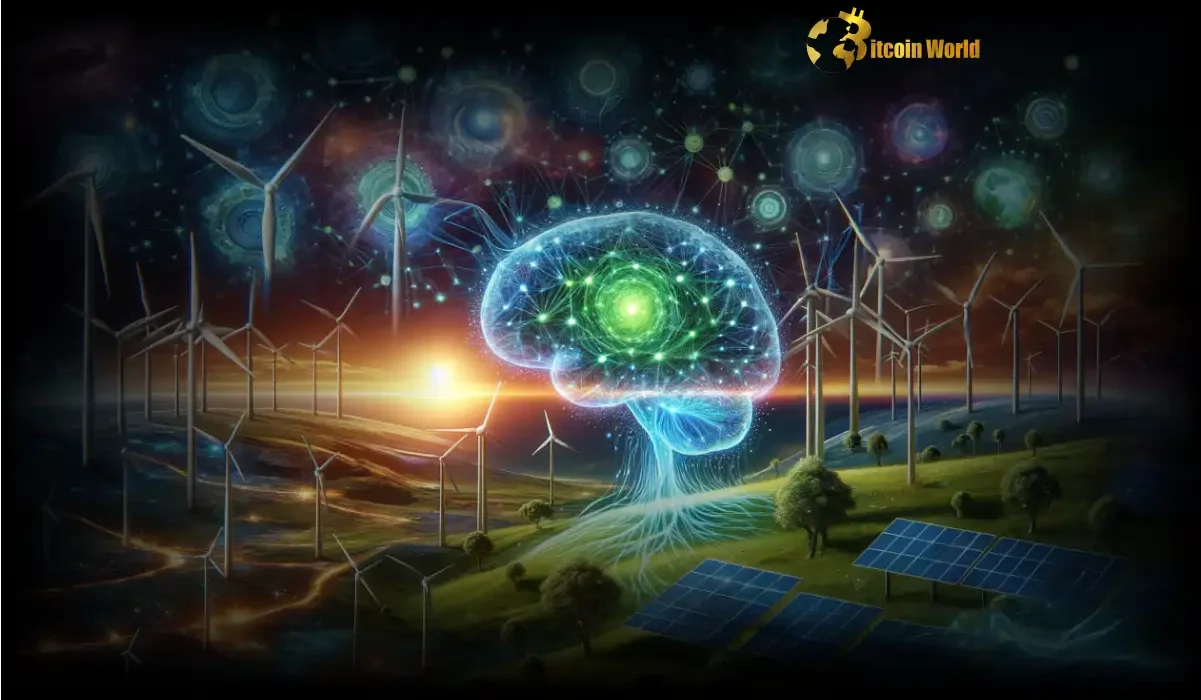Is the rise of AI sparking fears of a looming power crisis? While concerns about energy consumption are valid, a hidden bottleneck within the electrical grid bureaucracy is a major part of the story. Imagine terawatts of clean energy projects stuck in red tape, unable to power our growing digital world, including the burgeoning crypto and AI sectors. The solution might be surprisingly simple: using AI to fight bureaucracy. Google and PJM, the grid operator for the mid-Atlantic region, are joining forces to do just that, potentially unlocking vast amounts of renewable energy and easing power shortage anxieties.
Can AI Really Solve Electrical Grid Bureaucracy?
The problem isn’t a lack of power generation capacity, but rather a massive backlog in connecting new power sources to the existing electrical grid. Think of it like a highway traffic jam, but for electricity. Across the U.S., a staggering 2.6 terawatts of power are waiting for approval – double the current total US power generation! PJM, managing electricity flow across several states, faces one of the most significant energy bureaucracy logjams. Overwhelmed with applications, PJM even paused accepting new connection requests in 2022.
Here’s the crux of the issue:
- Massive Backlogs: Thousands of projects are stuck in the application process, causing significant delays.
- Complex Approval Process: Navigating the bureaucratic maze is time-consuming and resource-intensive for both applicants and grid operators.
- Renewable Energy Hit Hardest: Clean energy projects, crucial for a sustainable future and powering energy-intensive technologies like crypto mining responsibly, are disproportionately affected.
Enter AI Google, PJM, and Alphabet’s Tapestry are betting that artificial intelligence can streamline this cumbersome process. Their partnership aims to develop AI models to:
- Automate Data Verification: Speeding up the initial stages of application review.
- Centralize Planning Tools: Creating efficient platforms for project submission and management.
- Optimize Renewable Integration: Helping PJM analyze and effectively incorporate variable sources like solar and wind power into the grid.
Why is Unlocking the Grid Crucial for the Future of Energy and Tech?
The surge in AI computing demands, alongside the ever-growing digital economy including cryptocurrency operations, is putting pressure on energy infrastructure. Tech giants are scrambling to secure power, investing heavily in nuclear and renewable energy sources. However, simply generating more power isn’t enough if we can’t deliver it efficiently.
Solving the electrical grid interconnection challenge offers several key benefits:
- Alleviating Power Shortage Concerns: Unlocking existing approved capacity can significantly reduce fears of insufficient power for data centers and other energy-intensive industries.
- Boosting Renewable Energy Adoption: Clearing the path for solar, wind, and storage projects accelerates the transition to cleaner energy sources. This is vital for sectors like crypto aiming for carbon neutrality.
- Economic Growth: Faster project approvals mean quicker investments in new power infrastructure and related industries, driving economic development.
- Grid Modernization: AI-driven tools can contribute to a more intelligent and adaptable electrical grid, better equipped to handle the demands of the 21st century.
What are the Challenges and the Road Ahead?
While the Google-PJM partnership is a promising step, challenges remain:
- Complexity of Grid Operations: Managing a vast electrical grid is incredibly complex, and AI solutions need to be robust and reliable.
- Data Integration and Standardization: Effective AI models require high-quality, standardized data, which may be a hurdle in a fragmented energy sector.
- Regulatory Landscape: Bureaucracy is often intertwined with regulations, and AI solutions must navigate existing legal and policy frameworks.
- Fuel Agnostic vs. Decarbonization Goals: PJM’s commitment to a “fuel agnostic” grid, while seemingly neutral, might clash with the urgent need to prioritize renewable energy to meet decarbonization targets. Google’s stated commitment to decarbonization will be crucial in steering this partnership towards clean energy solutions.
The Powerful Potential of AI in Energy
Google and PJM’s initiative highlights the powerful potential of AI to tackle real-world infrastructure challenges. By untangling energy bureaucracy, AI can act as a catalyst for a more efficient, sustainable, and resilient energy future. For the crypto world and beyond, this means a greater likelihood of powering innovation with cleaner, more accessible energy, moving us closer to a future where technological advancement and environmental responsibility go hand in hand. The success of this project could set a precedent for other grid operators and industries grappling with complex bureaucratic processes.
To learn more about the latest AI trends, explore our article on key developments shaping AI features and institutional adoption.
Disclaimer: The information provided is not trading advice, Bitcoinworld.co.in holds no liability for any investments made based on the information provided on this page. We strongly recommend independent research and/or consultation with a qualified professional before making any investment decisions.


